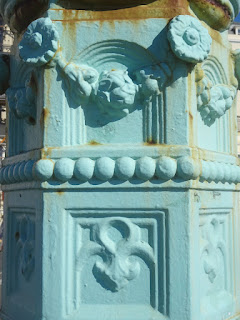One of Brighton’s earliest literary visitors was Frances ‘Fanny’ Burney, later known as Madame d’Arblay. She first arrived in the early 1780s, at a time when sea bathing was becoming a popular remedy for health ailments. She became a famous novelist, but was also an inveterate letter writer and diary keeper. Indeed, today she is best remembered for her diaries which were first published in seven volumes. Curiously, although she tells her diary in 1982, ‘I have bathed so often as to lose my dread of the operation’, in all those volumes I can only find one significant reference to Brighton beach and seaside.
Burney was born in 1752 at King’s Lynn, Norfolk, the daughter of Charles Burney, a musician and man of letters. The family moved to London in 1760, where Charles was part of a busy literary circle. Fanny was a precocious child (although her mother died when she was just 10). She was educated at home with the help of her father’s extensive library and of his friends, in particular Samuel Crisp who encouraged her to write journal-letters, in which she carefully reported on the social world around her family. And, it was writing of this ilk that led to her first novel, Evelina, published anonymously when she was only 26.Evelina was an instant success and led London society to speculate on the identity of the writer - widely assumed to be a man. The Burney Centre biography says Fanny ‘became the first woman to make writing novels respectable’. With Evelina, it adds, she created a new school of fiction in English - a ‘comedy of manners’ - one in which women in society were portrayed in realistic, contemporary circumstances. This new genre would later pave the way for Jane Austen and other 19th century writers. Meanwhile, once discovered as the author of Evelina, Burney was taken up by literary and high society, in particular she became very friendly with the Thrales and Dr Johnson, and would often stay at the Brighton house of the Thrales in West Street.
In 1786, Burney was appointed Second Keeper of the Robes to Queen Charlotte, wife of George III. This position took her to Brighton where the King decamped for health reasons. But she was not happy in court, and was allowed to resign in 1791. Not long after, she married the French emigré Alexandre d’Arblay, and they had one son. She died in 1840. More information is available at Brighton Museums and The Burney Centre.Burney left behind a rich literary estate of diaries and letters. Heavily edited versions of these were published in the late 19th and early 20th centuries, but it wasn’t until Joyce Hemlow published her landmark biography, The History of Fanny Burney, in 1958 that the full impact of Burney’s contribution to literature and letters began to be better appreciated. All seven volumes of the original Diary and Letters of Madame d’Arblay, edited by her niece and published by Henry Colburn in 1842, are available online at Internet Archive. For information on the more recent Complete Scholarly Edition by Hemlow see Oxford University Press.
Burney first visited Brighton in 1779. Here is a brief diary extract written during that visit.
26 May 1779
‘The road from Streatham hither is beautiful: Mr., Mrs., Miss Thrale, and Miss Susan Thrale, and I, travelled in a coach, with four horses, and two of the servants in a chaise, besides two men on horseback; so we were obliged to stop for some time at three places on the road.
We got home by about nine o’clock. Mr. Thrale's house is in West Street, which is the court end of the town here, as well as in London. ’Tis a neat, small house, and I have a snug comfortable room to myself. The sea is not many yards from our windows. Our journey was delightfully pleasant, the day being heavenly, the roads in fine order, the prospects charming, and everybody good-humoured and cheerful.’
And here is a diary entry from three years later - Burney’s only significant mention of the beach and swimming (at least that I can find).
20 November 1782
‘Mrs and the three Miss Thrales and myself all arose at six o’clock in the morning, and ‘by the pale blink of the moon’ we went to the sea-side, where we had bespoke the bathing-women to be ready for us, and into the ocean we plunged. It was cold, but pleasant. I have bathed so often as to lose my dread of the operation, which now gives me nothing but animation and vigour.’
In view of this latter comment by Burney, it is somewhat curious that she doesn’t mention Brighton’s beach or bathing elsewhere. When I asked ChatGPT why this might be, it proposed the following reasons.
1) Burney, like many women of her era, maintained a degree of propriety in her writings. Sea-bathing, particularly for women, involved being physically handled by ‘dippers’ and experiencing an undignified immersion in the sea. She may have found the experience too embarrassing or indelicate to describe in detail. 2) While Brighton was famous for its sea-bathing, Burney’s letters suggest she was more interested in its social scene - the promenades, assemblies, and court gatherings. 3) Once she became accustomed to bathing, she may not have considered it remarkable enough to record further. 4) References to bathing were removed by editors if they were deemed too trivial or personal.
(The photograph of bathing machines above is a detail from a larger image found in Victorian and Edwardian Brighton from old photographs by John Betjeman and J. S. Gray published by Batsford 1972.)






.jpeg)




.jpeg)

